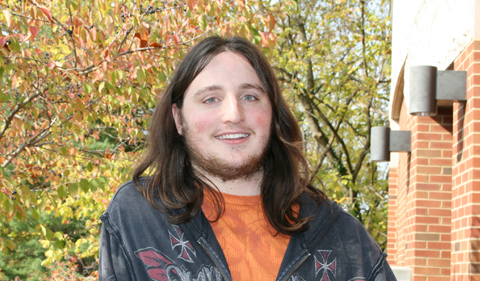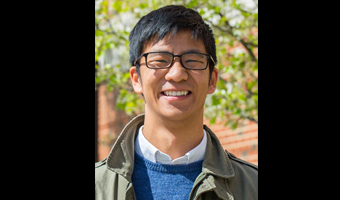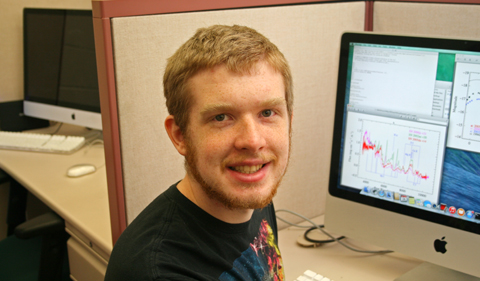
David Overton
By David Overton
(B.S. Physics, Class of 2016)
My research in Physics & Astronomy with Dr. Carl Brune was on an 19F(p,n) reaction, specifically with regard to a few special discreet states of the resultant 19Ne. When I started, my knowledge of nuclear physics was limited to say the least. I ended up spending a lot of time reading papers about the subject and asking questions.
The research also included a fair amount of programming, an area in which I had no experience prior to this research. Thankfully, I received help from Dr. Brune and Dr. Tom Massey, a research associate professor in the department.
There have been many experiments similar to ours with an abundance of data to go along with them. However, only one experiment (‘Is γ-Ray Emission from Novae Affected by Interference Effects in the F18(p,α)O15 Reaction?’ from Phys. Rev. Lett. 110, 032502) suggested the certain energetic state of 19F we hoped to find. This state could have a large effect on the astrophysical rate for protons reacting on 18F in novae.
Our method for searching for these states is by bombarding 19F with high-energy protons. These protons “stick” to the 19Ne nucleus, ejecting a neutron in the process. The energy of the ejected neutron depends on a few factors including the proton energy, the excitation energy of the neon, and the lab angle. To know the neutron’s energy, and therefore the excited neon’s energy, depends on the precision with which we can measure our other variables. Attaining precise measurements proved to be the largest challenge to overcome in this experiment, but it was not insurmountable.
It was quite an experience learning how to use the Edwards Accelerator Lab and how it all works. It turned out to be very simple in some aspects and just as complicated in others. I’ve learned a lot doing this research and it has been a great experience.
David Overton – 2015 Intern with Dr. Carl Brune – senior at Ohio University – College of Arts & Sciences – physics major



















Comments